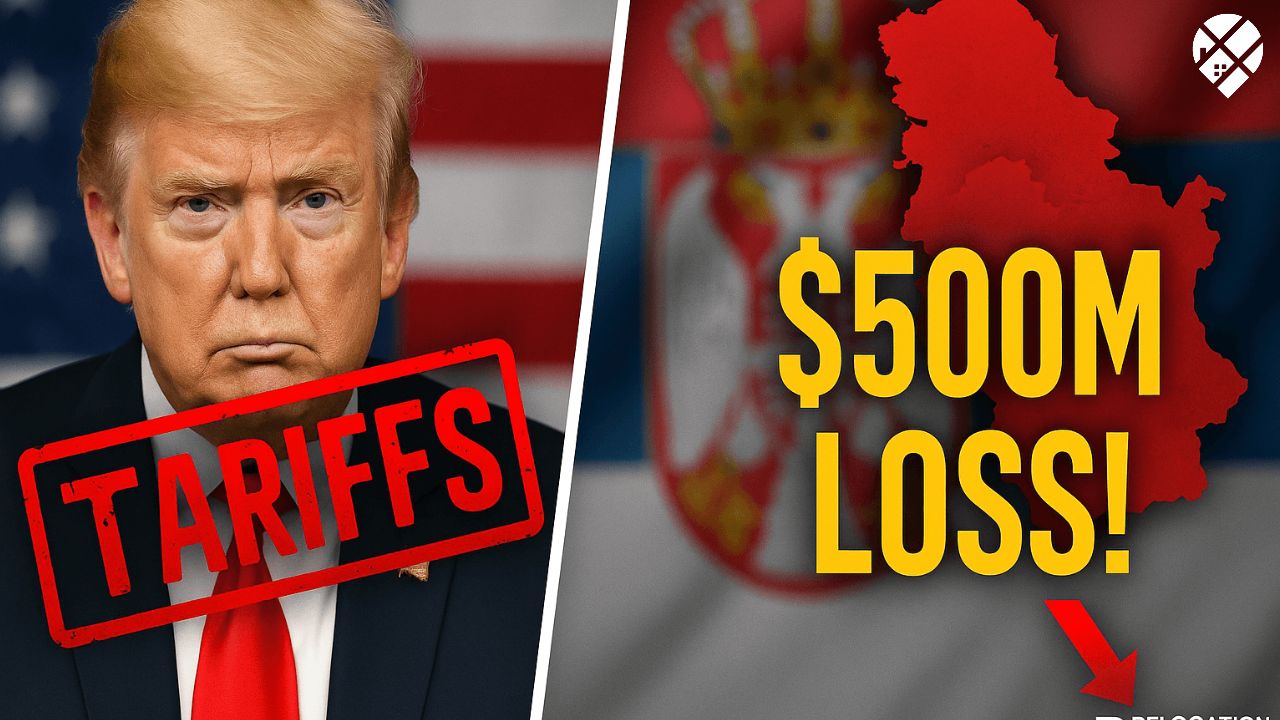Why Is the U.S. Imposing Tariffs on Serbia in 2025?
Understanding the 35% Tariff Penalty and What It Means for Serbia’s Future
TL;DR:
As of August 7, 2025, the U.S. has imposed 35% tariffs on Serbian exports—one of the highest globally—citing Serbia’s continued partnership with Russia. While officially framed as a trade issue, many experts and locals believe it’s a geopolitical message aimed at pressuring Serbia to align more closely with U.S. interests, especially regarding Kosovo and Russian energy. The move raises serious questions about economic sovereignty, foreign influence, and what’s next for Serbia’s global partnerships.

Once more, the United States is intervening in Serbian policy, this time via economic pressure. On August 7, 2025, tariffs of up to 35% on Serbian exports to the U.S. officially came into effect.
This penalty is one of the highest rates the U.S. has levied on any country—even higher than the 30% imposed on China. In contrast, the EU negotiated a tariff cap of just 15% under similar conditions.
So what’s really going on?
According to U.S. sources, Serbia is being punished for its continued cooperation with Russia, especially in energy and trade sectors. But many observers—including anonymous sources cited in the Serbian press—say this is more about political posturing than economics.
"The U.S. is using tariffs to send a message—if you don't follow our playbook, you'll pay for it," said one Belgrade-based analyst.
U.S. Claim:
Serbia has a trade surplus with the U.S., justifying punitive tariffs.
Serbian Response:
Serbia's Statistical Office data shows the opposite—a trade deficit with the U.S.
| Metric | Value |
|---|---|
| U.S. Tariff on Serbian Exports | 35% |
| Tariff on Chinese Exports | 30% |
| EU Negotiated Tariff | 15% |
| Serbia–U.S. Trade Balance | Deficit (Serbia) |
Serbian President Aleksandar Vučić has publicly acknowledged that sanctions on Serbian energy companies—especially those tied to Russia like Naftna Industrija Srbije (NIS)—are likely to expand.
Meanwhile, Serbia’s Chamber of Commerce expressed disappointment, highlighting the negative impact on domestic exporters and bilateral relations with the U.S., which had been improving in recent years.
Short answer: Not significantly in the short term.
Why?
Most of Serbia’s exports go to the EU, not the U.S.
Serbia has strong trade relationships with China, the Middle East, Russia, and Africa.
The Serbian economy has weathered far worse, including hyperinflation in the 1990s and 78 days of NATO bombing.
"We’ve survived tougher times—and we will again," says one Serbian business owner.
Some Russian-backed manufacturers in Serbia that export to the U.S. may consider relocating operations abroad due to the tariffs. But again, U.S.-bound exports are not Serbia's main focus.
Still, domestic companies aiming to grow their presence in the U.S. market now face higher competition and shrinking margins.
This is part of a broader U.S. effort to reduce Russian influence in the Balkans and pressure Serbia into alignment with Western policies—including the EU and NATO.
But the message seems mixed.
On one hand, there are sanctions and penalties. On the other, U.S. investors—including members of the Trump family—are actively exploring business ventures in Serbia.
How can the U.S. penalize Serbia while also seeking investment opportunities?
That's a question many Serbians are asking.
At Relocation Serbia, we speak with countless locals, expats, and business partners who echo the same concern:
“We don’t want to be bullied. We want partnerships, not penalties.”
Serbian businesses understand global politics—but they also want to build lives, grow companies, and invest in the future without being pawns on a geopolitical chessboard.
The 35% tariff is a clear political move with limited economic impact (for now).
Serbia is not isolated—it maintains strong ties with Russia, China, the EU, and beyond.
This move may strain U.S.–Serbia relations, but resilience runs deep in the Serbian people.
Drop your thoughts in the comments 👇 or reach out to us at Relocation Serbia.